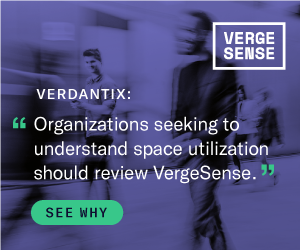Commercial Real Estate is Paying Attention to Managed Services
Tom Shircliff, Co-Founder, Intelligent Buildings

Technology managed services are a flexible, powerful way for organizations of all sizes to have lower capital expenditures, predictable costs, access to expertise, and changing technologies. This has proven especially effective for mid-size organizations that are not themselves in the business of technology, allowing them to apply capital and focus on their core business.
Red Hat defines it this way: “Managed services are a way to offload general tasks to an expert, in order to reduce costs, improve service quality, or free internal teams to do work that’s specific to your business.”
These benefits lead Intelligent Buildings to create our managed services as an extension of our expertise in smart buildings. The real estate technology space has changed quite a bit since we started in 2004 - going from straightforward interoperability and operational dashboards to sophisticated analytics, big data, cloud services, digital twins, artificial intelligence, nation-state cybersecurity attacks, regulatory changes, and now the mega forces of ESG and hybrid work technologies.
The cultural divide between IT and Facility Management is well known. These industry changes have created even more pressure to reconcile the two and have a seamless strategy for technology necessary for business. But this is easier said than done when you have a real estate value chain (e.g., investors, developers, contractors, etc.) that has limited technology skill sets - not to mention that all technology, including prop tech, moves at a much faster pace of refresh and leapfrog than real estate does.
Our clients found that after analysis, strategy, and recommendations, they needed a more simplified way to execute and maintain their smart building strategies. Unfortunately, they also found that there were few ways or resources to do it. For example, traditional IT services companies are hopelessly ignorant of the facility technology, workflow, and culture and have made significant missteps in their attempts to sell into the industry. It’s interesting to ponder the absence of familiar “big IT” brands in the smart building space. On the other hand, the well-known facility service providers are not well-versed in the technology and cybersecurity necessary to help their customers implement technology necessities.
So, what is the best way to approach cybersecurity for building control systems such as HVAC, elevator, lighting, parking, and access control? You cannot have a heavy-handed IT approach that just “shuts down” anything it sees. At the same time, you can’t allow hundreds or even thousands of technicians to go without cybersecurity and technology policy. And what about more mundane but critical functions like system backups? Most building systems aren’t backed up at all; if they are, the data is stored in many different places and media types by various companies. This is challenging for any building or property manager, especially when adding the stress of decarbonizing portfolios and navigating the return to work/hybrid era.
Building control system cybersecurity, backup, and policy management are table stakes issues for basic business continuity and disaster recovery. But it’s almost never done well if it’s done at all. And it’s not even the only thing to consider—what about technology strategy, use cases, evaluation, purchases, implementation, and management? This is starting to sound like a department or even an empire to be built just to keep up. A better way is to take an approach that allows the second half of the Red Hat definition and “free internal teams to do work that’s specific to your business.”
It is possible to get expertise, evergreen technology services, low to no capital expense, and predictable costs during scaling without building that empire (or department). Managed services have been indispensable in the enterprise IT world for decades. We now see its necessity in commercial real estate, albeit from a different provider. As we noted earlier, the traditional IT mindset is ill-equipped for the facility technology environment. You must find a company with a firm grasp on the “dirty fingernails” issue, such as control systems, contractors, work orders, and the culture, in addition to sufficient IT awareness and skill sets.
It’s time for the industry to embrace this approach to keep up with the current technology density and risks and embrace a more sustainable, healthy, and hybrid work environment that is heavily technology-dependent.
This Week’s Sponsor
Intelligent Buildings® offers portfolio-wide cybersecurity site assessments and ongoing managed services including secure remote access, system backup and policy audits. We are the only company solely focused on real estate technology advisory, assessment, and managed services. Since 2004, we are the most trusted and experienced name in Smart Buildings. Find out more at www.intelligentbuildings.com.
Read Next
 5/29/2025
5/29/2025
AI Can’t Fix Bad Data. These Ideas Can Get You on the Right Track. Real estate visionaries constantly integrate innovative technology to make their organizations more efficient.
 5/22/2025
5/22/2025
Managing Building Automation and Integration Like an Investment Portfolio What if your building automation and integration decisions were managed with the same precision, discipline, and long-term vision as Warren Buffett’s investment portfolio?
 5/15/2025
5/15/2025
Tech, Talent and Transformation: 2025 Digie Finalists Announced For 27 years, Realcomm has presented the Digie Awards to acknowledge companies, real estate projects, technologies, and individuals that have advanced the commercial real estate industry through the strategic use of technology, automation, and innovation.
 5/15/2025
5/15/2025
Empowering Space Management with Data-Driven Visualization For effective CRE space management, it’s critical to centralize lease data, maximize rental square footage (RSF), improve energy efficiency and reconfigure spaces to meet changing needs.



%20(1)%20(1)%20(1).png)










